MARIA TURCIOS
Narrative written by Ann de Forest
Photos by Dave Tavani
On July 13, 1994, Maria Turcios rose in the dark at four in the morning to leave her village in rural Honduras and go find work in America. Her two oldest children woke up to kiss her good-bye. So did her husband, Rene. Her four younger children – the baby was two years and three months old — stayed sleeping. More than 20 years later, the memory of that morning brings fresh tears to Maria’s eyes.
Wiping those tears with the back of her hand, Maria tells her story — her journey to America, the long years of separation from her family, their happy reunion, and the even more painful years of immigration raids, deportations, and fear that followed — from the offices of the New Sanctuary Movement, where she works now as a community organizer. She is staunchly committed to supporting other families who, as she did, fled impossible poverty in their own countries. She hopes NSM’s efforts can spare them the pain of separation and the fear of deportation that her own family has suffered.
Back in 1994, Maria and her husband together decided that she should be the one to leave and find work in America. The store that she ran in her village was losing money, in part because she gave her customers the food and goods they needed on credit, even though she knew it was unlikely they could ever pay her back. She had taken out a loan using her father-in-law’s farm as collateral, but the store was still failing. It was her sister who convinced her to use the loan money to go to America. Maria’s plan was to work for two years and send money home to support her family and prevent her father-in-law from losing his farm. Then she would return home.
A devout Catholic, Maria prayed for God to lend her strength on the journey. “It was an excellent trip,” she says. The coyote – the guide that brought her– said it was the first trip he had organized that had gone so smoothly. She traveled with 123 others, half men, half women, plus one extra woman. From Honduras, they walked five hours to Guatemala. They stayed in Guatemala three days, and then they traveled for eight days through Mexico, first by bus and then packed together in the trailer of a big truck. Eleven days after the journey began, they reached the U.S./Mexican border. Pick-up trucks met them at the border. The men were told to lie down in the backs of the trucks, while the women crouched in the cabs in front. The trucks stopped at the edge of a highway and let the immigrants out. They were told to wait until no cars were coming. Then they ran.
With that quick dash across the wide black asphalt, Maria entered the United States. More trucks met the group on the other side, then took them to various safe houses scattered around Phoenix. Maria knew nobody who lived in America. Her cousin, who had accompanied her, had the name of some relative’s friend who lived in Philadelphia. So Maria headed across country to that distant point on the map hoping to find work in an unfamiliar city.
She settled in Kensington, not far from the El, and soon found work in South Philadelphia as a seamstress in a factory making fabrics for airplane interiors. Maria sent almost all the wages she earned back to Honduras, keeping just five dollars a week for herself. She lived on chicken and rice. “I never bought any sweets or candy. I didn’t buy anything extra to eat for the whole year.” She also never told her husband or her kids how difficult her life was. “I didn’t want them to know how much I was suffering.”
Maria found solace and community in her parish church, Visitation B.V.M. Every day, she would tell the friends she made at work and church about her children. Every day, she cried. She cried so much, so readily, and so often that her friends started calling her La Llorana, after the Crying Woman of Latin American legend, who wanders the shores of rivers and lakes weeping for her missing children.
After a year and a half, Maria realized that two years working in Philadelphia wouldn’t be enough. She had only paid half the money owed on the loan. She and her husband decided that he should now join her, leaving the children in the care of their two sets of grandparents.
“This decision was very hard because I wanted him to come and I wanted him to stay with the children,” she says. “So half of my heart was happy and half of my heart was crying.” She presses her palm to her heart. “He was in the same shape, half of him was happy and half of him was sad.”
When Rene arrived, though, and they started spending $20 a week on food, Maria got scared. She worried that his coming had been a mistake. With the two of them together, though, they earned more money, both taking on two jobs, working day and night. Maria kept her factory job, while Rene worked on construction crews. At night they packaged fruits and vegetables in a produce warehouse in South Philadelphia, finishing that job at 4 a.m., then leaving for their day jobs at 6 a.m. They talked to their children every day, and Maria suffered, knowing she had left them alone. The children had stayed together in their own home, grandparents living on either side, because they could not bear to be separated. But a year later the six children moved to the city of Juticalpa to continue their studies. There, her two older daughters obtained their teaching certificates.
In October, 1998, Maria’s fifth year in America, Hurricane Mitch hit Honduras. This “act of God” changed their lives. Their inland village did not suffer from the hurricane’s devastating impact, so Maria’s family was not in physical danger The hurricane had a huge economic impact in the country, however, and the U.S. government responded to the disaster by granting all Hondurans living in America, documented or not, Temporary Protective Status (TPS). Maria and Rene, after consulting an immigration lawyer, received a legal visa, renewable every 18 months. They could now work legally, and they could even travel. “It was a huge chance,” she says. “You don’t understand what it was like to live here without legal papers.” In the five years she had lived and worked in Philadelphia, she had never once told anyone that she was undocumented. She and Rene decided, “We’re going to take advantage of this and work harder.”
While their new status opened up the possibility of going back to their family, their lawyer advised them that leaving the country would be too dangerous. So they worked and waited. Five years stretched to seven. Maria still had not seen her children. “For seven years,” she says, “my throat was all choked up … and my heart was feeling squeezed.”
In that seventh year, during a three-day spiritual retreat at her church, Maria offered a private prayer. “I said to God, ‘I’m giving my children to you because I can’t take care of them.’ I wanted to bring my children here but my fear wouldn’t allow me to.” The prayer brought her peace and resolve. She left the retreat knowing that she would bring her children to Philadelphia within the year. “I left this retreat feeling very positive… I never regretted this decision.”
Almost exactly a year later, her family came, first two together, then three, and then her fourth oldest Angela, pregnant and traveling with her boyfriend. All of them made a journey like she had, guided by a coyote through Guatemala and Mexico, crossing the desert in order to sneak across the border.
To prepare for their reunion, Maria and her husband had bought a dilapidated three-story rowhouse, which Rene restored little by little. By the time the children arrived, the six-bedroom home was ready. The family was reunited under one roof.
“It was a complete change,” says Maria. “It was really beautiful. I was anxious that they would be angry because of our separation but they weren’t. It was like we had never been separated. I thought they wouldn’t trust us, but it wasn’t like that… We have always been a very together family.”
The family moved into their new home in 2003. Less than a year later “was when the real troubles began,” Maria says.
The 13th of January, 2004 is another date etched with precision in Maria’s memory. It was cold and snowy. Maria’s husband and son had already left for work. When Maria and her oldest daughter opened the door to leave for their jobs, a dozen ICE agents were waiting on their front steps. They entered the house without saying a word. “They don’t knock. They wait until the door is opened,” says Maria. “I wasn’t afraid because I had never done anything wrong in this country.”
The men searched all the rooms. The younger children were sleeping because school had been cancelled. The agents were looking for Angela’s boyfriend, father of her child. He was now living in North Carolina. That didn’t matter. They arrested three other men in the household instead. Maria’s brother and the husbands of her two oldest daughters were brought downstairs, handcuffed, and taken away.
At the police station, Maria learned later, the cops congratulated her brother and son-in-law for not having criminal records. Despite their clean records, the son-in-law was fined $10,000, and remained in the U.S. The two other men were deported two months later. Maria had tried to call her lawyer that morning, once she made it through the snow to work. She went to his office and paid the lawyer $750 to go to visit her brother and son-in-law in the jail, but he didn’t fight for them. “Sadly,” she says now, “I didn’t have a good lawyer. He didn’t do anything.”
Their neighbors warned them that immigration usually returned two weeks after their first raid. Scared for her family’s safety, Maria insisted they split up. The children moved in with another family. Rene and Maria lived by themselves in their large, empty house.
The next ten years were a nightmare, Maria says. “So everything was falling apart when immigration started coming — economically we were falling part, emotionally we were felling apart.” The family had to collect money to pay the fine. They moved, reunited, then separated again. They maintained an anxious vigilance. Any car that drove too slowly or passed the house too often could be filled with ICE agents. The man who hung out on the neighbor’s stoop all day, his clothes suspiciously clean and well pressed for the construction job he claimed to be doing, could be an Immigration spy. More than once, Maria had to sneak children from the house in the dark of night, leaving them with neighbors or nuns or the church deacon, all of whom were willing to take them in.
During this time, New Sanctuary Movement recruited Maria as a community organizer at the recommendation of her pastor. NSM is a national faith-based organization that supports, protects, and advocates for undocumented immigrants and their families. Maria had already been involved as a volunteer through her parish’s close affiliation with the organization. Philadelphia’s NSM offices are across the street from Visitation’s grand stone neo-Gothic church. And working for the benefit of her community was nothing new to Maria. Back in Honduras, when she was still in high school, Maria successfully petitioned for a government grant to buy sewing machines and train girls and young women how to use them so that they then could find work as seamstresses. As soon as she arrived in Philadelphia, she immersed herself in the life of her parish and quickly emerged as a leader.
What Maria didn’t know when she began volunteering at NSM is that her own family would become the center of the organization’s precedent-breaking challenge to U.S. immigration policy. Maria’s daughter, Angela, had been facing deportation charges for several years. In 2014, even though she was now married to a U.S. citizen and her two children, both born in America, were also citizens, Angela had been ordered to return alone to Honduras. From there, she could apply to return to the United States legally—but she would have to wait ten years. The family knew that the cost of the trip would be tremendous, both economically and emotionally. Angela did not want to leave her 8 and 11-year-old children behind. But she didn’t think she had any choice. NSM approached Maria and Angela, who also volunteered at NSM, and asked if Angela and her family would be interested in living in sanctuary in a church while NSM lawyers and organizers prepared to take her case to Washington.
The family agreed, and moved into Norris Square Presbyterian Church, where they lived for 58 days. Her husband and children could leave during the day for work and school, but Angela had to stay in the church day and night. NSM collected 200 letters from clerics and more than 6000 signatures from the community protesting Angela’s deportation. A pro bono lawyer took her case and accompanied the NSM organizers to Washington.
On a national level, providing sanctuary in churches was a strategy to pressure the government to reform immigration policies to stop deportations and separation of families. Angela’s challenge was the first case heard. Her appeal was granted, and she received a stay of removal for two years. During these two years her lawyer began to work to get her a green card residency. Her case is advancing: she obtained a waiver for having entered the country illegally and is now awaiting the judge’s decision on whether she will be able to stay here permanently. “Her life changed completely,” says her mother. “She can work. She can drive. They bought their own house. She is no longer afraid.”
Maria’s life has changed as well in the last two years. When she was first hired by NSM, she felt uncertain. She was uncomfortable speaking English, and she had never touched a computer. Now she is a whiz at Excel, creating spreadsheets to keep track of schedules, budgets, volunteers, legislative actions, and arranging for people to accompany immigrants to court. She is in charge of maintaining relationships with six of the 22 congregations who are members of NSM. With the new president’s stricter immigration policies, Maria also leads workshops for NSM’s Sanctuary in the Streets campaign, which trains volunteers to respond to immigration raids. More than 1300 volunteers signed up in January, when Trump’s immigration policies were announced. After participating in a half-day training, members are put on an emergency response list; when there is a raid they are called and told where to come to bear witness and protest the raid. Also, NSM operates a 24-hour hotline for people call to report a raid. “But these raids are happening so fast,” she says. “They don’t give people time to call the New Sanctuary emergency number. So ICE arrests and detains them, and usually takes them right away to the detention center in York to begin deportation proceedings. What we’re doing now is training community watch groups to support their neighbors when there are raids.”
Maria clasps her hands, and her eyes fill again with tears. She is still La Llorana, but now her heart aches for other immigrant families forced to live in fear. “I wish that the United States would be converted into a home for all the immigrants who are here,” she says. “We are not criminal people. We come from our countries for different reasons. And these reasons have been created by other powerful countries. And these powerful countries keep marginalizing our poor countries. I’m thinking of all the people who at this moment feel the same fear I have felt for several years.”
For Maria, tears and heartache prod her to action. She learned how to use a computer, she overcame her nervousness about public speaking, she answers the Immigration Raid Hotline, and trains hundreds of volunteers to make change happen in her community and in our country. “All this fear that I have has given me more strength to fight for my community. My hope is that when we work for justice that the work will be effective, and have an impact and bear fruit.”
She hopes that her actions – along with her story – will open closed minds and soften hardened hearts. “My faith keeps me strong,” she adds. “I’m not waiting for my political leaders. My hope is in my God.”

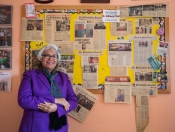
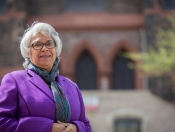
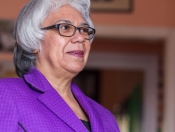
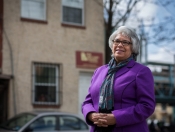
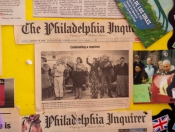
 Emi and Afaq Mahmoud
Emi and Afaq Mahmoud 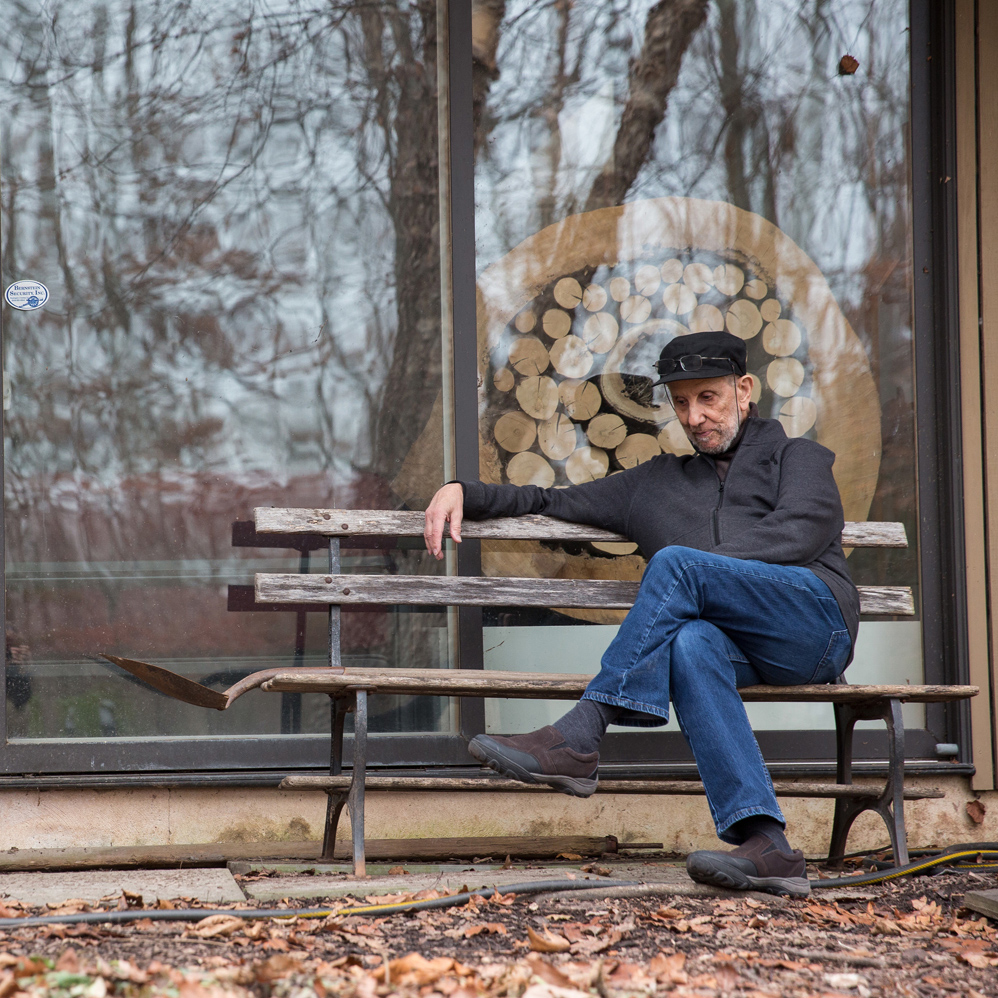 Rajie Cook
Rajie Cook 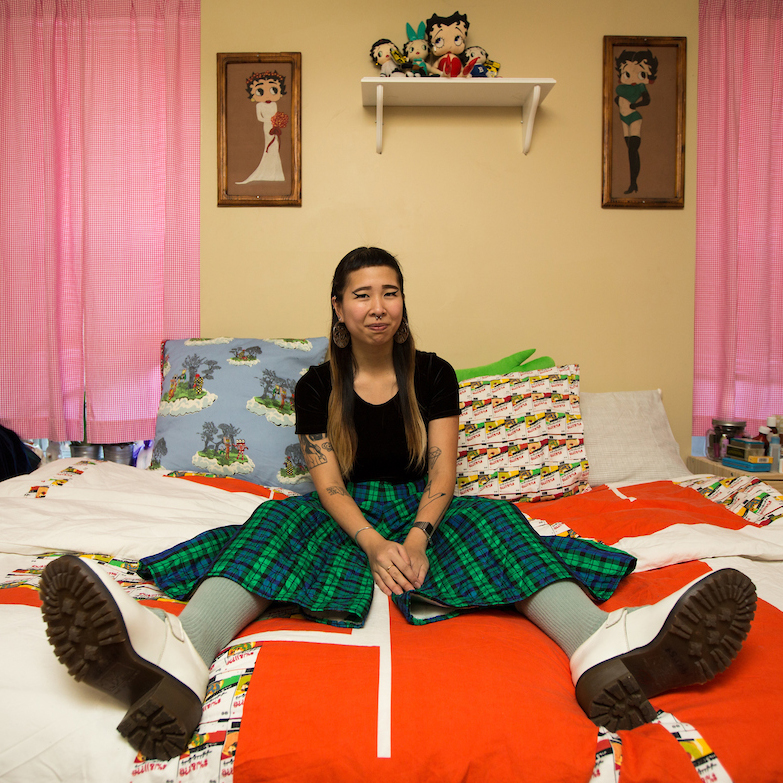 Cocoa Mahoney
Cocoa Mahoney 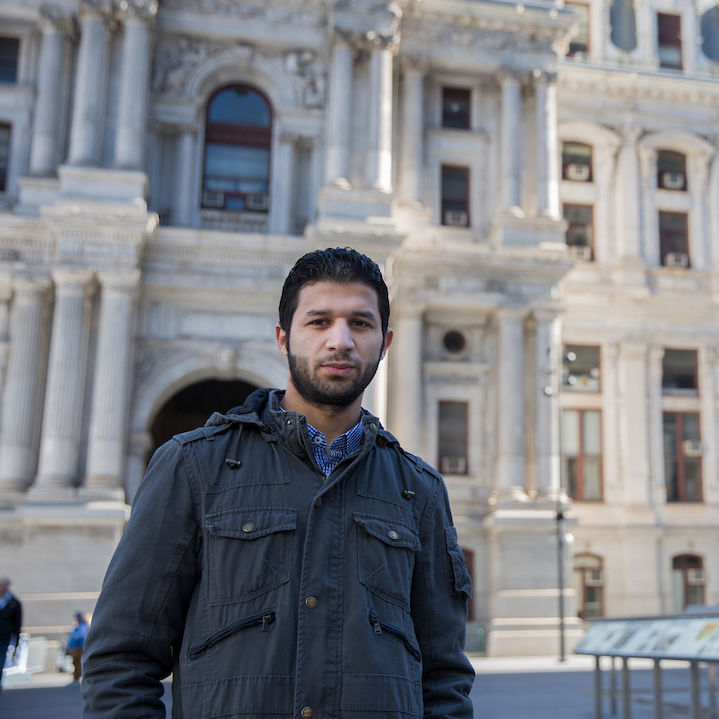 Yasser Allaham
Yasser Allaham 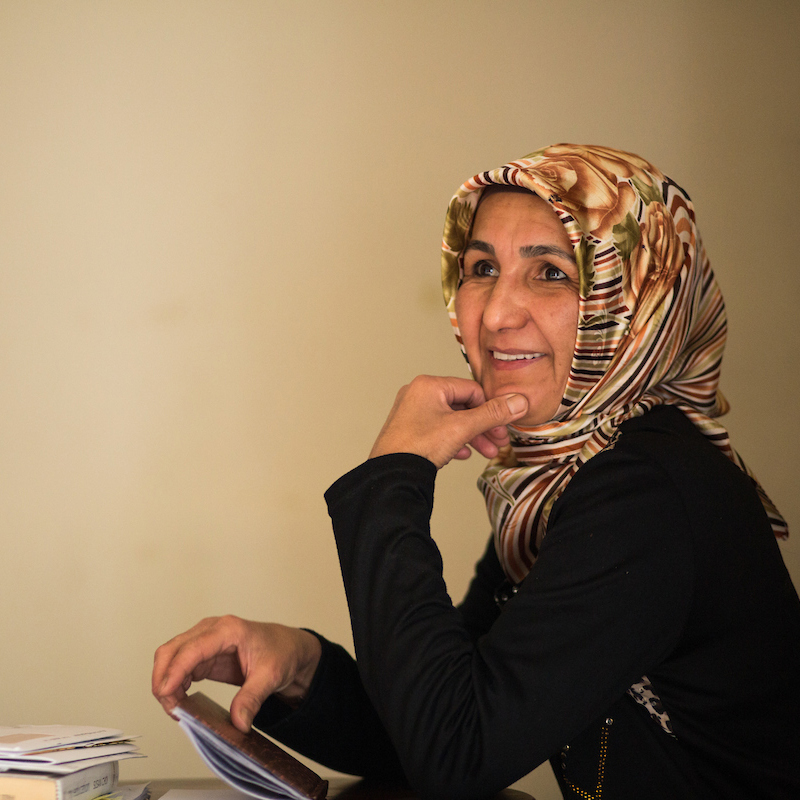 Gulnora Ravshan
Gulnora Ravshan  “Floating Outsider”
“Floating Outsider” 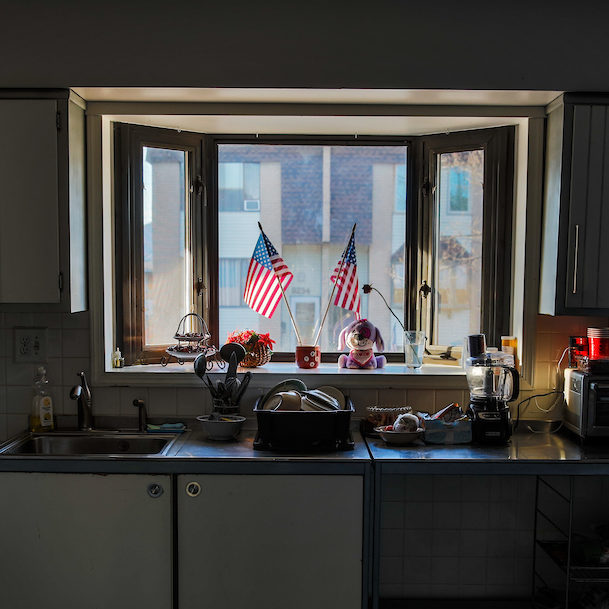 “Ahmad” & “Zainab”
“Ahmad” & “Zainab” 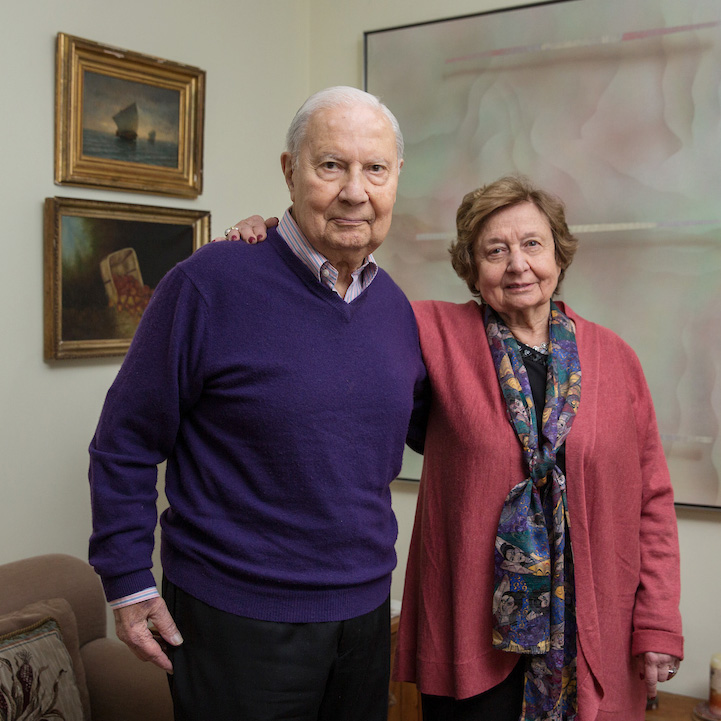 Jack and Gloris Dunnous
Jack and Gloris Dunnous 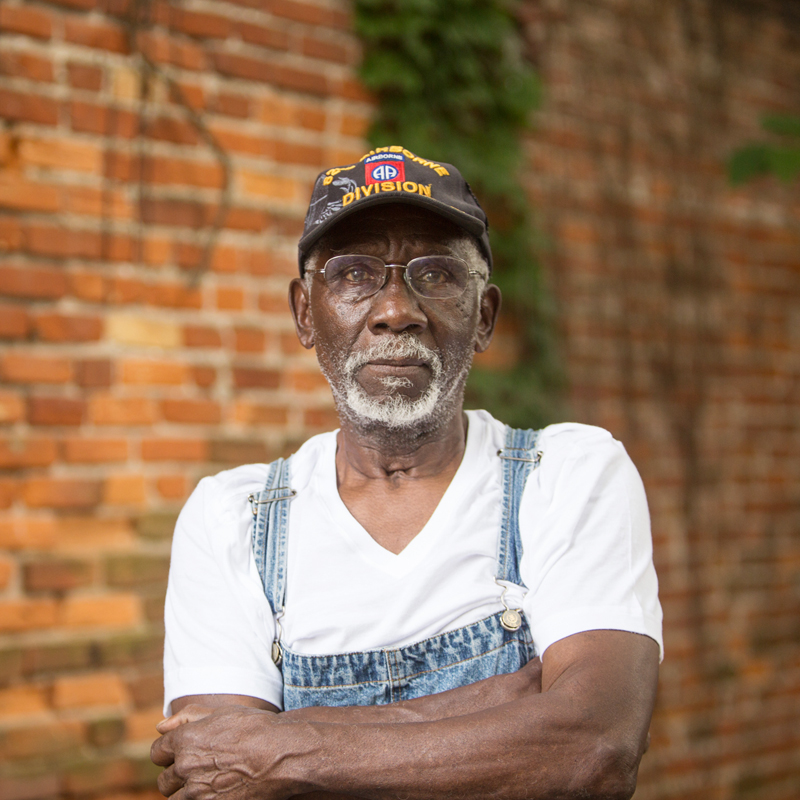 Lafayette El
Lafayette El 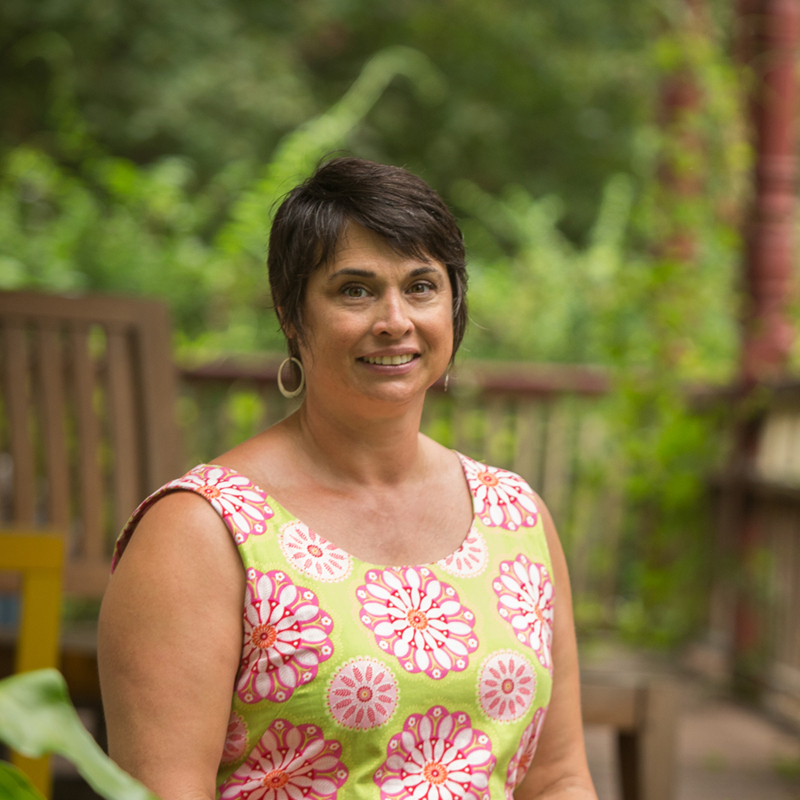 Tara O’Brien
Tara O’Brien  Sophia Simpson
Sophia Simpson